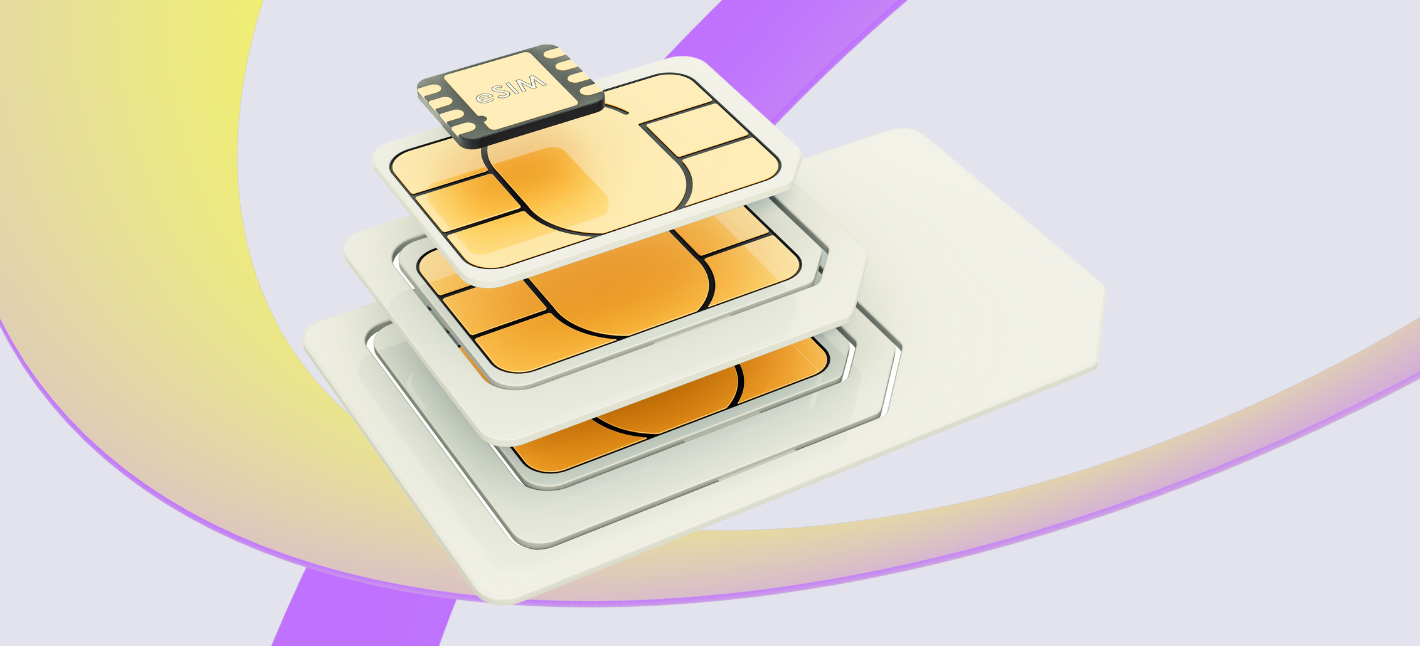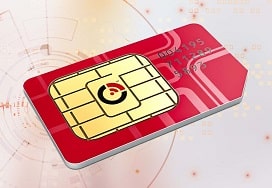IoT Connectivity Comparison Management of Connectivity in IoT
IoT Connectivity Sim Platform for IoT Connectivity Management
In an age entranced by technological advancements, the Internet of Things (IoT) stands out as a pivotal contributor to the evolution of smart grids. Smart grids utilize interconnected units for better energy administration, optimized performance, and driving sustainability. However, guaranteeing reliable IoT connectivity types the backbone of these techniques, as it immediately impacts their efficiency and performance.

Achieving reliable connectivity in smart grids necessitates comprehensive planning and strategy - Internet Connectivity Principles In IoT. One elementary aspect entails selecting the proper communication protocols. Various communication methods, together with cellular, LPWAN, and satellite, each include their advantages and limitations. Careful evaluation of operational requirements helps in deciding on probably the most acceptable protocol for different use cases throughout the smart grid ecosystem.
IoT Connectivity Platform Best Practices for IoT Network Design
Data security emerges as a significant component of dependable connectivity. As smart grids are increasingly prone to cyber threats, implementing robust security measures is crucial. This contains encryption protocols, secure communication channels, and frequent software program updates to guard knowledge integrity. A safe IoT environment fosters trust amongst stakeholders and encourages wider adoption of smart grid technologies.
Another pivotal space involves making certain low latency communication. Real-time knowledge transmission is imperative for monitoring and managing energy distribution effectively. A network’s capability to supply fast communication can significantly influence the responsiveness of grid operations, indicating the significance of infrastructure that may assist high-speed connections. Investing in advanced technologies might help mitigate latency challenges.
IoT Connectivity Control Strategies and Challenges of IoT Connectivity
Scalability is equally important for achieving continuous and reliable connectivity. Smart grids must have the capacity to handle an ever-increasing number of sensors, devices, and users. Future-proofing designs and adapting modular IoT solutions can make sure that the infrastructure remains functional as the network expands and additional devices are integrated. This flexibility aids in minimizing disruptions and sustaining the general effectivity of smart grids.
Energy management performs a vital function in IoT connectivity inside smart grids. Devices want to hold up operational efficiency whereas consuming minimal energy. Smart meters and energy-efficient protocols can monitor and handle the consumption of devices, thereby guaranteeing consistent operational performance. Implementing energy management options optimizes not only device efficiency but additionally community reliability.
Interoperability is essential for seamless integration of devices and systems. Different producers could create units using various standards, complicating communication throughout the smart grid. Promoting interoperability between gadgets can cut back issues and create a unified community that features efficiently. Establishing frequent standards for gadget compatibility accelerates integration and bolsters reliability.
Network redundancy is an important strategy to ensure ongoing connectivity. By incorporating a number of communication pathways, smart grids can preserve steady operation even when a single network path fails. This layered approach minimizes downtime and preserves the reliability of information transmission. It includes a strategic blend of wired and wireless choices to create a resilient network structure.
Connectivity Management IoT Connectivity for IoT Products
Monitoring and analytics are highly effective tools for enhancing connectivity reliability. Continuous oversight of community efficiency allows for the identification of potential points before they escalate into important considerations. Advanced analytics can predict community conduct and enable proactive maintenance, ensuring that the infrastructure stays robust and efficient over time.
Collaboration between stakeholders performs a vital position in developing dependable IoT connectivity in smart grids. Utility companies, expertise providers, and regulatory our bodies must work collectively to develop standards, share best practices, and conduct analysis on rising technologies. This partnership creates a stronger ecosystem, encouraging innovations that improve the overall reliability of the grid.
IoT Connectivity Technologies SIM Card Solutions for IoT Connectivity
User education and engagement are sometimes missed but crucial components in establishing and maintaining IoT connectivity. By providing customers with data about the functionalities and operations of smart grid technologies, stakeholders can foster user-friendly interfaces and promote responsible utilization. An knowledgeable consumer base ultimately contributes to the soundness and reliability of the general network.
As smart grid technologies continue to evolve, incorporating advancements in synthetic intelligence and machine studying can pave the way for enhanced connectivity. These technologies facilitate predictive maintenance, permitting for real-time adjustments and timely interventions. By leveraging AI and analytics, smart grids can turn out to be extra adaptive, refining their operations primarily based on real-world information and behaviors.
IoT Global Connectivity Overview of Cellular IoT Connectivity
In conclusion, making certain reliable IoT connectivity in smart grids encompasses a multifaceted strategy, integrating careful strategy, technological advancements, and proactive management. From selecting appropriate communication protocols to fostering collaboration among stakeholders, each facet contributes to the overarching aim of making an efficient and secure energy grid. Continuous adaptation to rising technologies and willingness to evolve with industry demands will finally information smart grids towards a more reliable and resilient future.
- Deploy resilient communication protocols designed for low-latency and high-reliability data transmission within smart grids.
IoT Connectivity Control Essential Information on IoT Connectivity
- Implement network redundancy by utilizing various communication pathways, guaranteeing continued operation throughout outages or failures.
- Regularly update firmware and software across all IoT units to protect towards vulnerabilities and enhance connectivity resilience.
- Leverage edge computing to course of data closer to the supply, lowering bandwidth necessities and enhancing response occasions.
- Establish stringent security measures, together with encryption and authentication, to guard the integrity of data being transmitted.
Managed IoT Connectivity Subscriptions for IoT Connectivity SoC
- Utilize mesh networking capabilities, which permit devices to interconnect, enhancing protection and reliability in difficult environments.
- Conduct common network efficiency assessments to determine bottlenecks and optimize communication effectivity throughout the grid.
- Invest in scalable infrastructure to accommodate future enlargement of IoT gadgets and evolving technologies without compromising connectivity.
IoT Connectivity Control M2M Connectivity Solutions in IoT

- Maintain a proactive incident response plan to rapidly tackle connectivity interruptions and restore providers efficiently.
- Foster collaboration between utility corporations and know-how suppliers to make sure alignment on connectivity standards and protocols.
What are the necessary thing challenges in making certain reliable IoT connectivity in smart grids?
IoT connectivity in smart grids faces challenges corresponding to community congestion, power outages, and cybersecurity threats. To address these, it is important to implement robust communication protocols, invest in redundant techniques, and undertake robust security measures.
How do I select the best connectivity protocol for my smart grid IoT devices?
IoT Connectivity Products Management of IoT Connectivity
Selecting the best protocol involves evaluating the particular requirements of your devices, together with data fee, range, and energy consumption. Common protocols include LoRaWAN, Zigbee, and cellular networks. A thorough wants assessment will information you in making the solely option.
What function does encryption play in ensuring dependable IoT connectivity in smart grids?
IoT Connectivity Service Providers Quick Overview of IoT Connectivity Types
Encryption is crucial for securing knowledge transmission in smart grids. It prevents unauthorized entry and protects sensitive info from being intercepted. Implementing sturdy encryption standards enhances the overall reliability and safety of IoT connectivity.
How can I reduce latency in IoT communications within a wise grid?
To reduce latency, think about optimizing community configurations, utilizing edge computing find this to process knowledge nearer to the supply, and selecting high-performance communication technologies. Prioritizing real-time knowledge transmission can significantly enhance response instances.
What methods can help preserve connectivity throughout power outages?
Managed IoT Connectivity How Cellular IoT Connectivity Operates
Implementing battery backup techniques, energy-efficient gadgets, and alternative power sources (like solar energy) can help keep IoT connectivity during power outages. Additionally, making certain that your community design contains redundancy will mitigate connectivity points.
How do I assess the scalability of article source my IoT connectivity solution?

To assess scalability, analyze your present and future system requirements, together with knowledge processing wants and community visitors hundreds. Choose a solution that may simply expand its capability and combine with new technologies without vital disruptions.
Connectivity Management Platform IoT Modern Solutions for IoT Connectivity
What components ought to I consider when deploying IoT options for smart grid monitoring?
Consider factors like coverage area, value, ease of deployment, and interoperability with existing systems. Also, be certain that your chosen answer is versatile enough to adapt to evolving know-how and regulatory requirements within the energy sector - IoT Network Connectivity.
Wireless IoT Connectivity Tips for Choosing IoT Connectivity Solutions
How can I improve the safety of my IoT gadgets in a wise grid environment?
Improving safety includes implementing multi-layered defenses, conducting regular safety assessments, and preserving firmware updated. Employing sturdy authentication measures and steady monitoring of community visitors also can help safeguard your IoT units.
IoT Global Connectivity What Does IoT Connectivity Look Like?
What are the advantages of utilizing a dedicated community for IoT in smart grids?
A dedicated network minimizes interference from other gadgets, offering extra dependable and consistent connectivity. It permits for tailored performance optimizations and enhanced safety, making certain that your smart grid operates efficiently and successfully without outdoors disruptions.